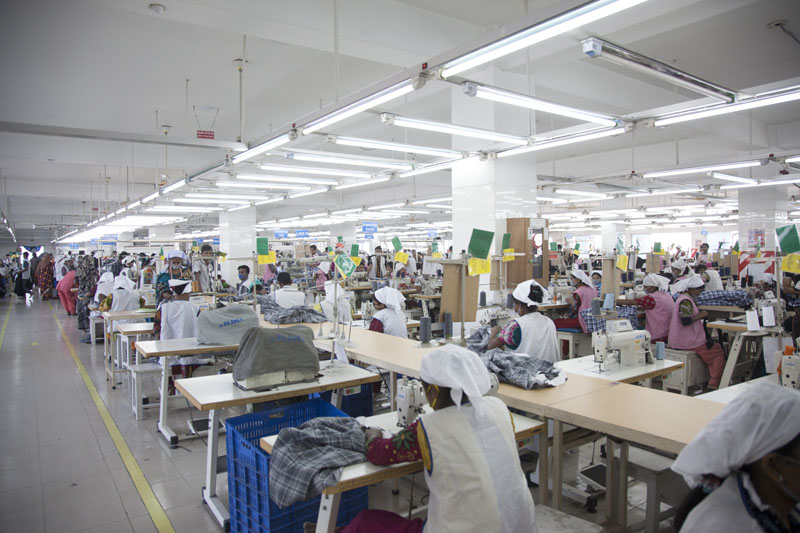Published in The Daily Star on June 24, 2018

Garment shipments from Bangladesh to its major Asian markets—India, China and Japan—are rising by the day thanks to competitive prices the country offers and spiralling production cost in China.
Bangladesh’s strength in formal garment production and higher economic growth in populous Asian countries have also helped such shipments to increase, which could hardly reach a few million dollars only five years ago, experts said.
Garment export to these three markets grew 17.79 percent year-on-year to $1.39 billion in July-May period of the current fiscal year, according to data from the Export Promotion Bureau (EPB).
Japan, with a retail garment market worth nearly $50 billion, is the largest export destination for Bangladesh among the Asian nations. In July-May period, Bangladesh sent $787.13 million worth of garment items to Japan, which is a 13.04 percent year-on-year rise.
The overall export to Japan has already crossed $1.05 billion mark in the first 11 months of the current fiscal year from $945.47 million last year.
Garment export to Japan will cross $1 billion soon as major Japanese retailers are increasing their footprint in Bangladesh for formal garments like woven shirts and t-shirts, said Anwar-Ul Alam Chowdhury Parvez, former president of the Bangladesh Garment Manufacturers and Exporters Association. Japan is the only nation where Bangladesh exported goods worth more than $1 billion apart from its traditional markets — the EU, the US and Canada.
“Among the Asian destinations, garment export to Japan from our group is on the rise,” said Shahidullah Chowdhury, CEO of Noman Group, which exports over $1 billion worth of apparel items a year.
“Especially, export of formal woven shirts and bed sheets to Japan is higher than other products.”
Another promising market in Asia is India, which is also a destination of more than $50 billion worth of garment items.
Garment shipments to India from Bangladesh more than doubled year-on-year in the first 11 months of the fiscal year.
Between July last year and May this year, apparel items worth $253.07 million were shipped to the neighbouring country, in contrast to $117.21 million a year earlier, according to the EPB data.
The reason for the exponential rise is bulk purchase by Western brands with operations in India and Indian clothing chains, which are finding Bangladesh’s garment items to be more competitively priced for India’s bulging middle-class demographic.
Bangladeshi garment exporters face a 12.5 percent countervailing duty on shipments to India, although India announced duty-free facility on all Bangladeshi products except some alcoholic and beverage items in 2012.
Overall exports to India increased 24.67 percent year-on-year to $792.88 million in the July-May period.
The demand for formal wear in India is high due to growing middle-income office-going population, Parvez said. Moreover, the government’s 3 percent stimulus package for the emerging markets also acted positively for higher growth to India and other new destinations, he said.
China itself is becoming a major garment export destination for Bangladesh because of higher cost of production, enactment of stringent laws on garment production in China aimed at protecting the environment and shifting of manufacturing bases in China to machinery and electronic gadgets, Parvez said.
Moreover, China is a densely populated country in Asia. Two thirds of the global population reside in Asian countries, of which China alone has more than one billion people.
So, for having a larger consumer base, China is turning into a major garment export market for Bangladesh, he said.
Garment exports to China in the July-May period fell 2.82 percent year-on-year to $347.08 million, the EPB data said.
Overall export to China also declined by 28.91 percent year-on-year to $626.75 million during the period.
“The export to any country might be lower on a particular year for some reasons, but this is not any permanent problem,” Parvez said.
Garment export to China may rebound soon as Bangladesh enjoys duty benefit for export of nearly 5,000 goods to the Chinese market, exporters said.
 CPD RMG Study Stitching a better future for Bangladesh
CPD RMG Study Stitching a better future for Bangladesh



